Analysis
Market Analysis: James Ensor’s Prints Coming to Christie’s
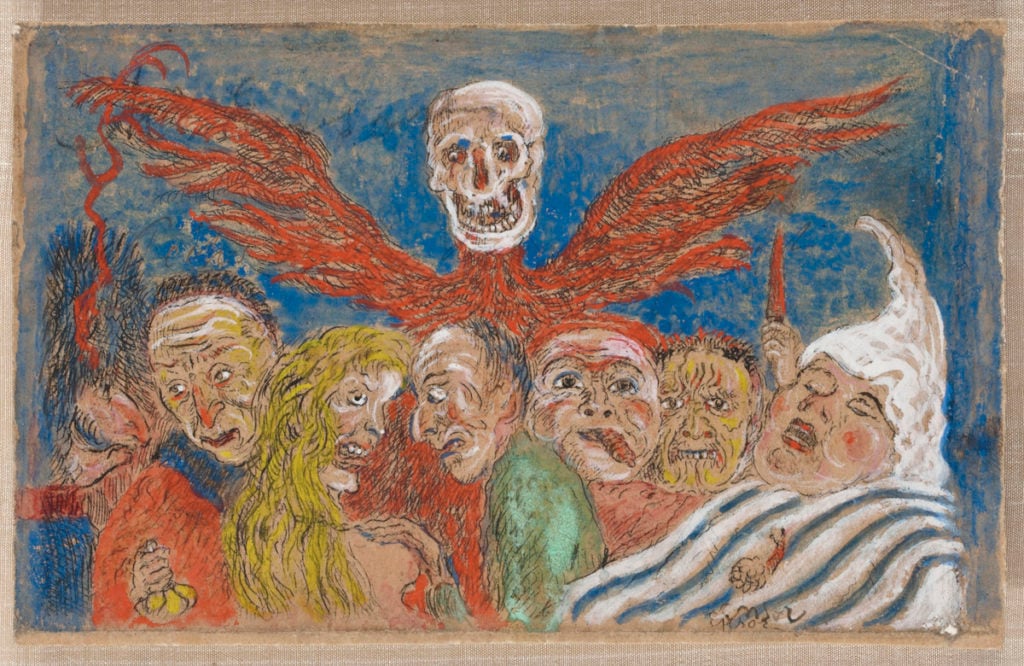

Coline Milliard

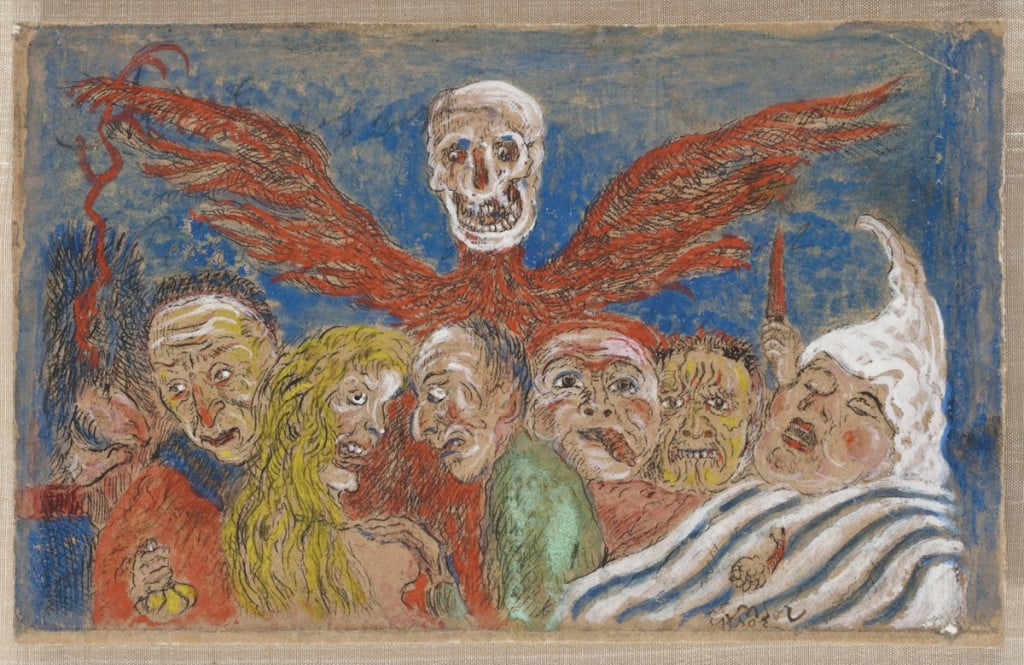
James Ensor, The Deadly Sins dominated by Death, from: The Seven Deadly Sins
Courtesy Christie’s
In less than two weeks, on March 19, 161 prints by the Belgian painter James Ensor will go under the hammer at Christie’s London. Gathered by Paris dealer Mira Jacob, the collection is exceptionally complete, missing fewer than 10 of the artist’s etchings and lithographs. The sale will take place on March 19, 2014, and it also demonstrates the richness of Ensor’s printed output, as well its variety. It also provides a perfect opportunity to look into what has remained so far a rather niche market.
Based in Ostend, Belgium, for most of his life, Ensor was an influential figure. He was a key member of Les XX group in his home country, and is widely considered a major influence on the Surrealists and the German Expressionists of Die Brücke (The Bridge) and Der Blaue Reiter (The Blue Rider). Mira Jacob was a staunch supporter of Ensor’s work, which she saw as presaging Surrealism. She exhibited her collection of the artist’s prints at her St. Germain-des-Prés gallery, Le Bateau Lavoir, in 1978, and again at the Strasbourg Museum in 1995, granting the pieces on offer at Christie’s an impeccable pedigree.
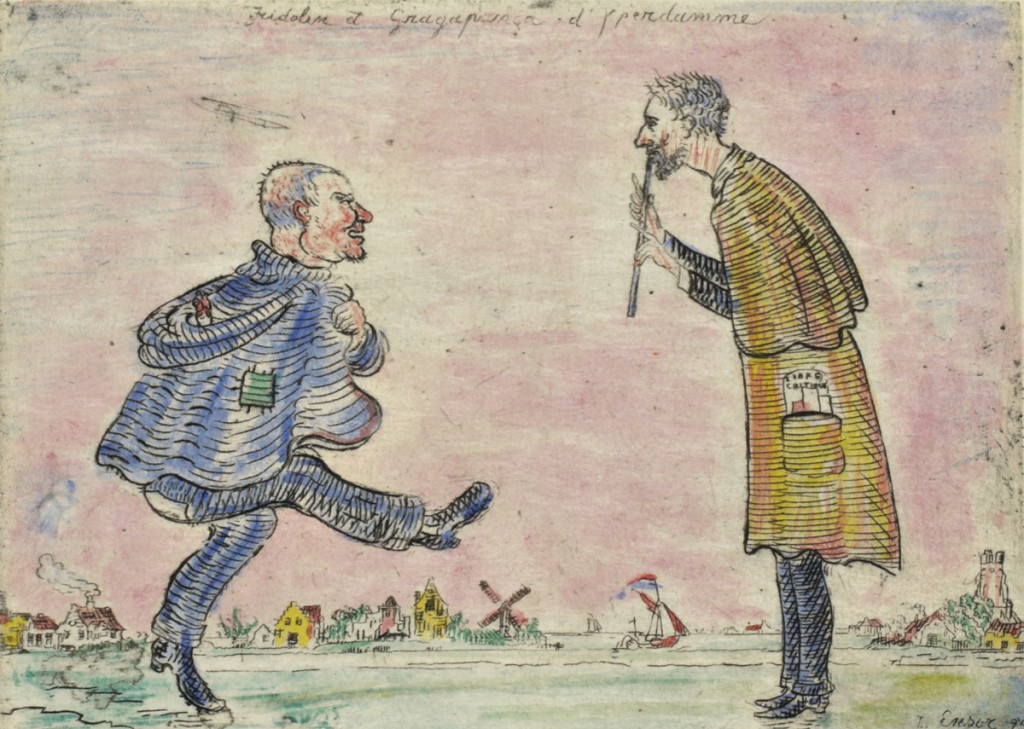
James Ensor, Fridolin et Gragapança d’Yperdamme (Fridolin and Gragapança of Yperdamme)
Courtesy Christie’s
Inspired in parts by Rembrandt, Ensor’s printmaking was a crucial strand in his practice. The artist used it as a laboratory of experiments–one which wasn’t always, as the New York fine prints dealer Harris Schrank told artnet News, related to his paintings. Printmaking was also a way to make money. Perhaps because of it, the artist was prolific. Ostend-based Ensor expert and author of his catalogue raisonné Xavier Tricot estimates that the artist made between 30 and 40 prints in 1888 alone.
Although the market for these remains relatively modest, the past 10 years have seen a notable increase in activity. Data provided by artnet Analytics show that the volume of Ensor prints and multiples sold every year has gone from $367,603 in 2003 to $522,439 last year.
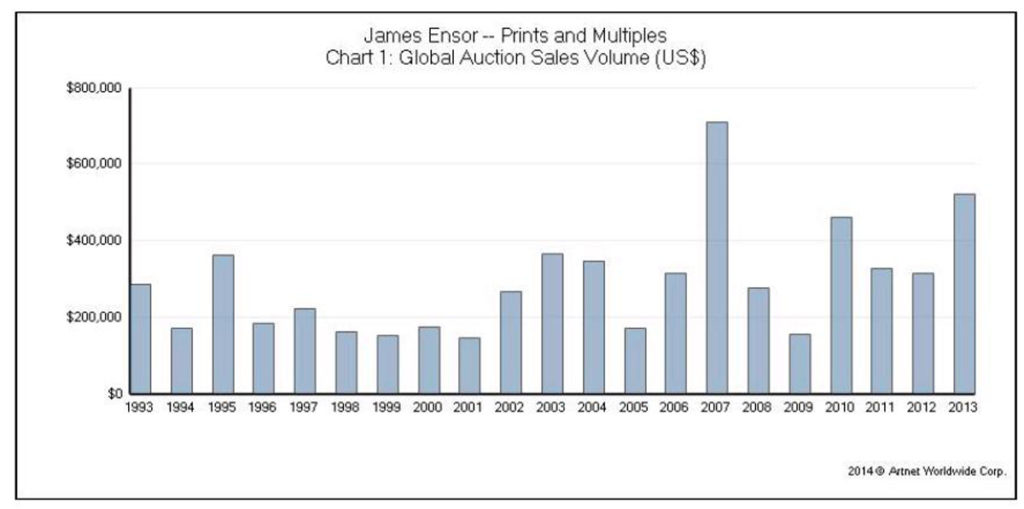
James Ensor, Global Auction Sales Volume (US$)
Christie’s choice of London for the sale is no accident. Ensor print collectors are mainly European, particularly Belgian. “Interest among collectors in the U.S. is rather thin,” says Schrink. “In recent years U.S. collectors have been looking for contemporary prints with plenty of ‘wall power,’ whereas Ensor prints call for close-up examination.”
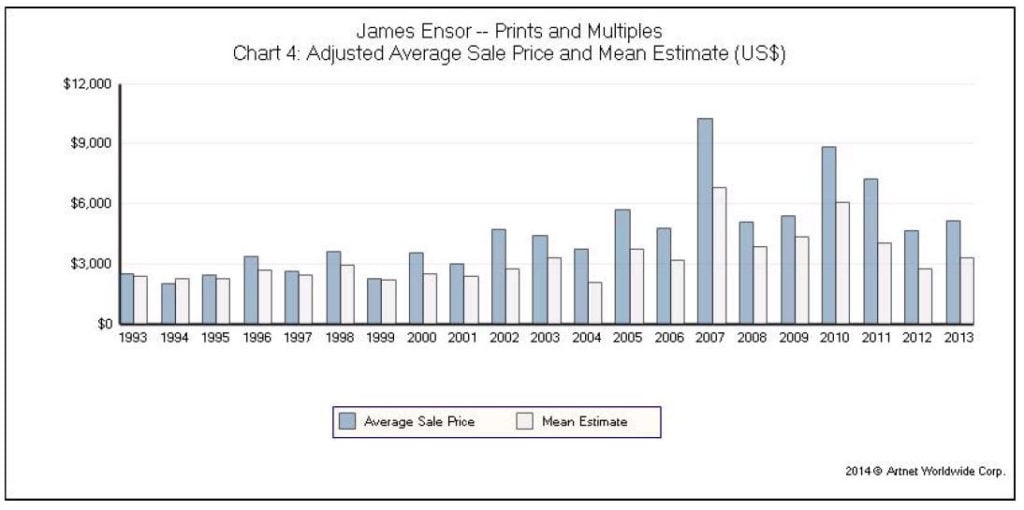
James Ensor, Prints and Multiples, Adjusted Average Sale Price and Mean Estimate (US$)
A study of the Ensor print market by artnet’s team of analysts shows that the average sales price almost doubled between 1993 and 2013 (jumping from $2,528 to $5,172). The average sale price has consistently been above the mean estimate since 1995, but it is yet a long way away from its 2007 peak, when it reached $10,289. However, a slight growth from last year might signal green shoots. This is encouraging, particularly when Ensor’s oeuvre as a whole has been performing so haphazardly over the last 24 months.
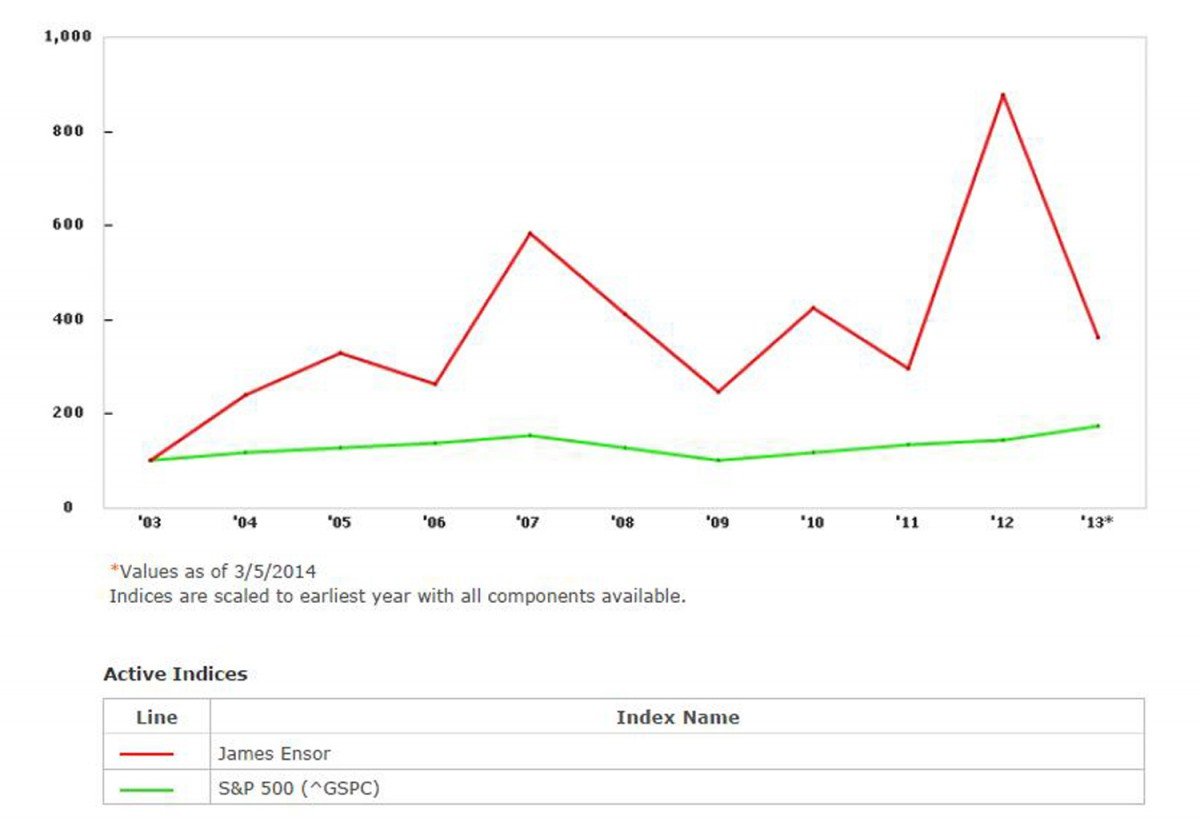
James Ensor, Report Index Graph
The prestigious provenance is likely to attract much interest for the Christie’s sale. But considering the wealth of Ensor prints around, caution remains de rigueur. “There is a huge difference between his recent paintings, and the pictures from 1888-95,” said Tricot during his conversation with artnet. “Quality is very uneven, and it is the same with prints.” This is reflected in the presale estimates, which range from £400 (US$659) to £40,000 (US$65,926).
From across the Atlantic, Schrank chimes in that “provenance alone does not ensure quality. Typically Ensor’s prints were printed over a period of years, by different printers, on different papers, some colored by him, and some by others. Unlike contemporary prints they were not made in a set number, on the same papers, intended to look alike. The key to assessing the quality of Ensor prints is connoisseurship.”